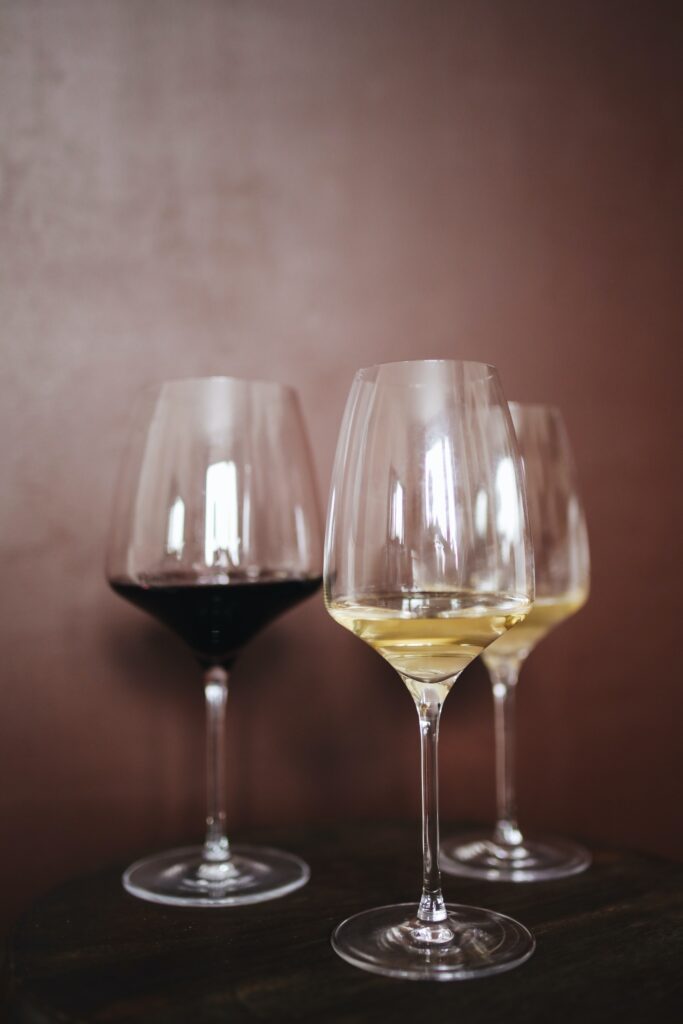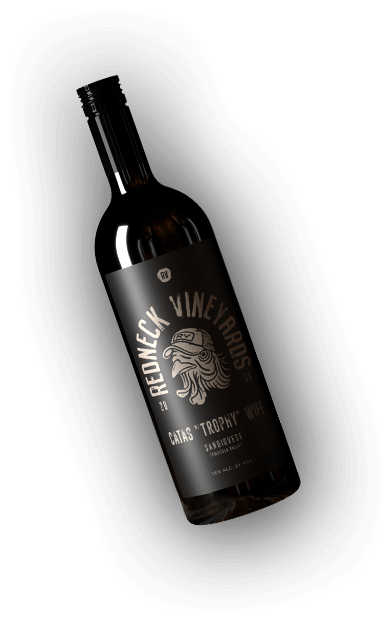Viticulture, Wine, Wine Tasting
What Makes White Wine White and Red Wine Red?
Most wine drinkers have a clear preference when it comes to which wine they like most: red or white. But why is that, and what are the main differences between the two? It’s clear that the colors differ from each other, but what else sets white wine apart from red? Here’s what you need to know about what makes white wine white and red wine red.
How the Type of Grape and Production Processes Vary
You might assume that one of the big reasons for the color difference between red and white wine is the type of grape used. That’s partly true, as red wine is made with red grapes — also often called black grapes. And white wine is mostly made from green or yellow grapes — also called white grapes.
But it’s more than just a difference between types of grapes. After all, when you squeeze a grape, the juice that comes out is clear whether it’s a red or green grape. So why are white wines white and red wines red then? It has to do with the skin of the grape.
When producing red wine, winemakers leave the skin of the red grape on, which means the wine ends up with a reddish color during the fermentation process. When making white wine, they remove the skin of the green or yellow grape. As a result, white wine has a much lighter color that’s close to the shade of the juice that comes out when you squeeze a grape.
For this reason, it is technically possible to make white wine from red grapes, though it’s not super common. Winemakers can simply take the skins off the grapes to avoid giving the wine a red tint. In fact, Champagne is often made with the juice of red grapes!
Flavor Differences Between White and Red Wine
As you might guess, using different colored grapes shouldn’t change the flavor much. So why do reds usually taste quite different from whites? One detail that changes the flavor has to do with the aging process of red vs. white wine.
More specifically, red wine is usually aged in oak barrels. This can reduce the fruity flavors and result in nuttier, smoother tastes. By contrast, white wine is often aged in cast iron barrels. This reduces oxidation and allows it to keep its fruity or floral flavor, which is why you probably notice a difference in taste between red and white wines.
In addition, the simple fact of keeping the fermenting wine in contact with the grape skin can make a difference. The longer the skin is in contact with the grape juice, the more tannins the liquid picks up. Those tannins give red wine its unique texture, as they give it some weight and make it feel firmer overall.
On the other hand, the fact that white wine has no grape skins in it allows it to taste fruitier and sweeter than most red wine. This gives it a refreshing, lighter taste and aroma. So if you’re wondering what makes white wines white and red wines red, one answer is whether grape skins and oak barrels were involved in fermentation — as both can change the color and flavor!
Pairing Red or White Wine With Food
If you like red and white wine about equally and are trying to decide which one to drink tonight, think about your food menu first. Each option pairs best with different foods, so consider some wine and food pairing basics.
For example, red wine usually goes best with big, bold flavors. So if you have a hearty or rich dish, a bold red wine is usually a perfect pairing. For this reason, red wine usually goes great with steak, grilled ribs, burgers, and strongly flavored fish dishes. Dark chocolate and certain bold cheeses — such as cheddar, gouda, and brie — also pair well with red wine.
On the other hand, lighter dishes go well with lighter-bodied wines, especially white wine. So chicken, pasta, and most fish — especially salmon — pair well with white vino. Most white wine also goes well with vegetables, desserts, soft cheeses, and any recipes with citrus flavors. Before you decide between white and red wine tonight, make sure you keep your menu in mind!
Types of White and Red Wine
Now that you know the main distinctions between red and white wine, you should consider the different varieties of each. After all, Pinot Noir may look similar in color to Malbec, but it doesn’t have the same aroma or mouthfeel. Here’s a quick rundown of the most popular types of red and white wine on the market.
- Light-bodied red: Pinot Noir, Grenache, Lambrusco
- Medium-bodied red: Merlot, Sangiovese, Shiraz, Chianti
- Full-bodied red: Cabernet Sauvignon, Zinfandel, Syrah
- Full, rich white: Chardonnay, Viognier
- Light, dry white: Pinot Grigio, Sauvignon Blanc
- Sweet white: Riesling, Moscato, Gewürztraminer
If you haven’t tried all the wines on this list, it may be time to set up a wine tasting to find a new favorite red or white! Fortunately, at Sweet Oaks Winery, we offer wine tastings and tours for anyone who wants to learn more about how wine is made or simply taste some great vino. Feel free to schedule your wine tasting today, or check out our wines available for sale online!



